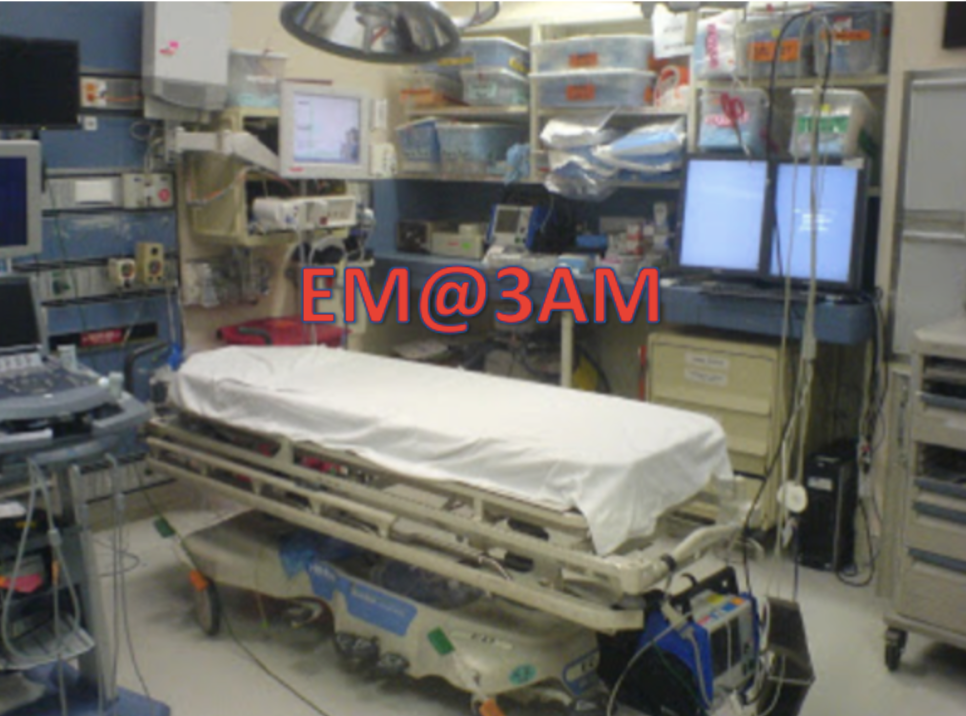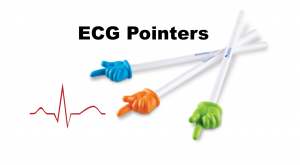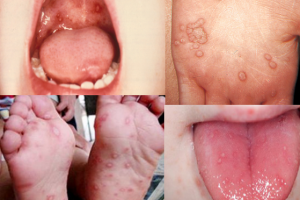Authors: Paige Seals, MD, MBA, MBS, MPH (EM Resident, University of Missouri-Columbia); Jessica Pelletier, DO, MHPE (APD/Assistant Professor of EM/Attending Physician, University of Missouri-Columbia) // Reviewed by: Sophia Görgens, MD (EM Physician, BIDMC, MA); Cassandra Mackey, MD (Assistant Professor of Emergency Medicine, UMass Chan Medical School); Alex Koyfman, MD (@EMHighAK); Brit Long, MD (@long_brit)
A 23-year-old female presents to the ED with slurred speech, left lower leg weakness, and confusion. A friend is with her and states that the patient does not take any medications, has no past medical history, but has been complaining of various symptoms over the past year. The patient has been avoiding seeing a doctor because she does not have insurance.
On exam, you note that the patient has 0/5 strength in her left lower extremity, has slurred speech, and is unable to answer most of your questions. You code stroke the patient. CT head/CTA head and neck are unremarkable, but MRI brain reveals that this 23-year-old otherwise healthy female has had a stroke.
Question: What is the diagnosis?
Answer: Systemic lupus erythematosus (SLE)
Background:1
- SLE is an autoimmune disorder that primarily affects women (increased prevalence in African American women)
- In those with SLE, there is an exaggerated B cell and T cell response to antigens, as well as a loss of immune tolerance against self-antigens
- This leads to complement activation, cytokine cascades, immune complex tissue deposition, and production and defective elimination of antibodies
- All of the above contributes to a wide range of clinical manifestations with an extensive amount of organ systems affected
Etiology:2
- The mechanism that triggers the autoimmune response is largely still unknown
- There is a genetic component, shown by a high rate of concordance in monozygotic twins compared to dizygotic twins
- There are also specific genes that are associated with SLE
- Most of these genes are within the major histocompatibility complex – HLA Class I and Class II
- For example, HLA-DR3 seems to be related to anti-Ro/SSA and anti-La/SSB production
- Approximately 60% of those diagnosed with SLE were found to have an overexpression of IFN-alpha-induced genes
- Some of the autoantibodies that are implicated, but not required for the diagnosis of SLE:
- anti-nuclear (ANA)
- anti-ssDNA, anti-dsDNA
- Anti-dsDNA is associated with disease activity and specific organ damage
- anti-histone
- anti-Ro/SSA, anti-La/SSB
- anti-RNP
- anti-cardiolipin
- anti-B2-glycoprotein 1
- Hormonal factors
- Sexual hormones (compared to controls)
- Women with SLE may have low levels of DHEA, testosterone, and progesterone
- Men with SLE may have low DHEA, normal testosterone and estradiol, and high prolactin
- Thyroid hormones: in patients with SLE, elevated levels of antithyroid antibodies and serum TSH levels can be seen
- The prevalence of hypothyroidism in those diagnosed with SLE ranges from 3-21.4% (compared to the general US population, which has a prevalence of around 5%)3,4
- Hypothalamic axes: patients diagnosed with SLE have an altered autonomic nervous system response (increased prevalence of sympathetic activity and decreased parasympathetic tone),5which can be more pronounced with the corticotropin-releasing hormone CRH stress test
- This is associated with increased rates of inflammation and also with the development of cardiovascular disease5
- Sexual hormones (compared to controls)
- Environmental factors
- Epstein Barr Virus (EBV) is found in high titer in kids with SLE
- UV light can lead to autoantibody formation
- Silica dust and smoking cigarettes both increase the risk of developing SLE
- Several medications have been reported as causative agents of SLE (Drug-Induced Lupus, DIL)
- The two medications that have the highest incidence with DIL are procainamide (risk has been reported to be as high as 30%) and hydralazine (risk reported between 5-10%)6
- Other drugs associated with DIL: anti-TNF agents (eg, etanercept and infliximab), carbamazepine, chlorpromazine, ethosuximide, penicillamine, phenytoin, PTU, rifampin, sulfasalazine6
- The exact pathophysiology of DIL is unknown, but there have been different mechanisms identified6
- Procainamide and hydralazine-induced SLE have been linked to slow acetylators with genetic deficiency of N-acetyltransferase, as well as inhibition of DNA methylation6
- A moderate consumption of alcohol can be a protective factor7
- While the exact mechanism is unknown, there is evidence that suggests that a low to moderate consumption of alcohol can lead to increased production of anti-inflammatory mediators that help decrease disease severity in multiple autoimmune disorders7
Epidemiology:
- Based on a nationwide ED sample, those diagnosed with SLE are more likely to be between the ages of 31-50 years of age and female8
- Female:male ratio is 9:19
- African American women are most likely to be affected10–12
- Disease severity is also higher in this population1,11,12
Clinical Presentation:
- Common presentations for patients with SLE coming to the ED:13





- Patients with known SLE receiving chronic maintenance therapy may present with side effects and complications of their medications (Table 3)2



Diagnosis:2
- ACR (American College of Rheumatology) Criteria (Table 4)
- 4 or more of the 11 criteria are present, either serially or simultaneously, during any interval of observation
- SLICC (Systemic Lupus International Collaborating Clinics) Criteria (Table 5)
- 4 or more criteria (at least 1 has to be clinical, at least 1 has to be immunologic)


ED Evaluation:
- If suspecting a new diagnosis of SLE:2,16
- ANA, anti-DNA
- Bedside ECHO – if there is clinical concern for pericardial effusion, valvular dysfunction, myocardial infarction, or pulmonary embolism (PE)
- Complement factors C3/C4
- Complete blood count (CBC) – for anemia, leukopenia, thrombocytopenia
- Comprehensive metabolic panel (CMP) – for liver/renal dysfunction
- C-reactive protein (CRP)/erythrocyte sedimentation rate (ESR)
- Urinalysis (UA) – for casts, hematuria, proteinuria
- Urine pregnancy testing – as this may impact management choices
- If suspecting SLE flare:

Treatment:2
- For patients with a suspected new diagnosis of SLE with severe symptoms/organ damage, rheumatology should be consulted early
- Rheumatology should also be consulted in the ED for patients with known SLE and suspected flare
- If rheumatology consultation is unavailable and the emergency clinician has a high suspicion for SLE flare without suspicion for infection, it is reasonable to consider administration of corticosteroids
- Methylprednisolone 125–500 mg/day X 3 days are recommended18
- Medications commonly used for SLE flares and chronic management that may be recommended by rheumatology include:
- Non-steroidal anti-inflammatory drugs (NSAIDs)
- Antimalarials (i.e. hydroxychloroquine)
- Corticosteroids
- Immunosuppressants
- Biologics
- SLE flare patients with high disease activity [as measured by the SLEDAI (https://www.mdcalc.com/calc/10099/systemic-lupus-erythematosus-disease-activity-index-2000-sledai-2k) or SLE-DAS [http://sle-das.eu/)], concomitant infection, or organ damage typically require admission.19–23
- Discharge recommendations should include: sun protection, good diet and nutrition, exercise, smoking cessation, appropriate immunizations
- SLE patients are at higher risk for infection than the general population due to the disease itself as well as immunosuppressing medications used to treat it24
- Routine vaccination should include: COVID-19, hepatitis B, herpes zoster, human papillomavirus (HPV), influenza, pneumonia, and tetanus/diphtheria/pertussis24,25
- Live vaccines should be avoided in patients with high disease activity or who are on immunosuppressants25
- If rheumatology consultation is unavailable and the emergency clinician has a high suspicion for SLE flare without suspicion for infection, it is reasonable to consider administration of corticosteroids
Prognosis:
- In the United States – survival rate ranges from 95% at 5 years to 78% at 20 years2
- Mortality is related to vital organ damage, not high rates of disease activity26
- Renal insufficiency contributed to mortality in 40.9% of SLE ED events in one study
- Pulmonary hypertension is another factor that leads to high mortality
Pearls:
- SLE is an autoimmune condition that can affect any organ system
- While it is unlikely we will diagnose SLE in the ED, this needs to be on the differential so that patients can receive appropriate follow-up
- Patients with established SLE may present with medication side effects or flares
- Immunosuppressant therapy should only be ordered in conjunction with rheumatology recommendations

A 34-year-old woman presents to the ED with abdominal pain. Medical history includes systemic lupus erythematosus for which she takes belimumab. Vital signs are within normal limits. Physical examination shows epigastric and left upper quadrant tenderness with tender splenomegaly. A CT of the abdomen is shown above. Which of the following is the most likely diagnosis?
A) Cirrhosis
B) Portal vein thrombosis
C) Splenic abscess
D) Splenic hematoma
E) Splenic infarction
Correct answer: B
The spleen resides intraperitoneally within the posterior portion of the left upper quadrant, behind the stomach and adjacent to the lower ribs (9–12). It receives its arterial blood supply from the splenic artery, which is a derivative of the celiac artery, with venous drainage via the splenic vein into the superior mesenteric vein and ultimately the portal vein. Normal spleen size varies with height and weight, with larger, anatomically normal spleens seen in taller, heavier individuals and greater size in male individuals relative to female individuals. A normal spleen is not usually palpable due to its superoposterior location within the abdomen, and even an enlarged spleen may be difficult to appreciate. Massive splenomegaly refers to a spleen that is so large its lower edge is difficult to appreciate within the pelvis.

There are many potential causes of splenomegaly, primarily categorized into six types: infections, inflammatory, congestive, malignant, infiltrative (nonmalignant), and hypersplenic. Within the congestive category falls such diagnoses as cirrhosis, congestive heart failure, and portal vein thrombosis, the latter of which is evident on the above CT of the abdomen. Portal vein thrombosis causes splenomegaly via venous obstruction within the portal vein that causes venous congestion within the mesenteric veins, through which the spleen distributes its venous drainage. This may manifest clinically as abdominal pain, tenderness, and splenomegaly, as seen in this case.
Treatment of patients with congestive splenomegaly is usually directed at the underlying cause. In cases of portal vein thrombosis, the cause may be cirrhosis or prothrombotic disorders (e.g., antiphospholipid syndrome, which is potentially the case in this patient with lupus). Patients without cirrhosis are typically treated with anticoagulation, while those with cirrhosis require an individualized approach that considers their bleeding risk, transplant candidacy, and other factors. Patients with progression of their thrombus or intestinal ischemia may require further endovascular or surgical therapies.
Further Reading:
Further FOAMed:
- https://www.emdocs.net/systemic-lupus-erythematosus-ed-presentations-evaluation-and-management/
- https://www.emdocs.net/systemic-lupus-erythematous-common-complications-emergency-medicine-pearls/
References:
- Kiriakidou M, Ching CL. Systemic Lupus Erythematosus. Ann Intern Med. 2020;172(11):ITC81-ITC96. doi:10.7326/AITC202006020
- Fortuna G, Brennan MT. Systemic Lupus Erythematosus. Dent Clin North Am. 2013;57(4):631-655. doi:10.1016/j.cden.2013.06.003
- Zhang X, Xu B, Liu Z, Gao Y, Wang Q, Liu R. Systemic lupus erythematosus with hypothyroidism as the initial clinical manifestation: A case report. Exp Ther Med. 2020;20(2):996-1002. doi:10.3892/etm.2020.8788
- Wyne KL, Nair L, Schneiderman CP, et al. Hypothyroidism Prevalence in the United States: A Retrospective Study Combining National Health and Nutrition Examination Survey and Claims Data, 2009-2019. J Endocr Soc. 2022;7(1):bvac172. doi:10.1210/jendso/bvac172
- Bellocchi C, Carandina A, Montinaro B, et al. The Interplay between Autonomic Nervous System and Inflammation across Systemic Autoimmune Diseases. Int J Mol Sci. 2022;23(5):2449. doi:10.3390/ijms23052449
- Solhjoo M, Goyal A, Chauhan K. Drug-Induced Lupus Erythematosus. In: StatPearls. StatPearls Publishing; 2025. Accessed April 13, 2025. http://www.ncbi.nlm.nih.gov/books/NBK441889/
- Caslin B, Mohler K, Thiagarajan S, Melamed E. Alcohol as friend or foe in autoimmune diseases: a role for gut microbiome? Gut Microbes. 2021;13(1):1916278. doi:10.1080/19490976.2021.1916278
- Dhital R, Pokharel A, Karageorgiou I, Poudel DR, Guma M, Kalunian K. Epidemiology and outcomes of emergency department visits in systemic lupus erythematosus: Insights from the nationwide emergency department sample (NEDS). Lupus. 2023;32(14):1646-1655. doi:10.1177/09612033231215381
- Weckerle CE, Niewold TB. The unexplained female predominance of systemic lupus erythematosus: clues from genetic and cytokine studies. Clin Rev Allergy Immunol. 2011;40(1):42-49. doi:10.1007/s12016-009-8192-4
- Dall’Era M, Cisternas MG, Snipes K, Herrinton LJ, Gordon C, Helmick CG. The Incidence and Prevalence of Systemic Lupus Erythematosus in San Francisco County, California: The California Lupus Surveillance Project. Arthritis Rheumatol. 2017;69(10):1996-2005. doi:10.1002/art.40191
- Somers EC, Marder W, Cagnoli P, et al. Population‐Based Incidence and Prevalence of Systemic Lupus Erythematosus: The Michigan Lupus Epidemiology and Surveillance Program. Arthritis Rheumatol. 2014;66(2):369-378. doi:10.1002/art.38238
- Lim SS, Bayakly AR, Helmick CG, Gordon C, Easley KA, Drenkard C. The Incidence and Prevalence of Systemic Lupus Erythematosus, 2002–2004: The Georgia Lupus Registry. Arthritis Rheumatol. 2014;66(2):357-368. doi:10.1002/art.38239
- Nikolopoulos D, Fanouriakis A, Boumpas D. Cerebrovascular Events in Systemic Lupus Erythematosus: Diagnosis and Management. Mediterr J Rheumatol. 2019;30(1):7-15. doi:10.31138/mjr.30.1.7
- Rose J. Autoimmune Connective Tissue Diseases: Systemic Lupus Erythematosus and Rheumatoid Arthritis. Emerg Med Clin North Am. 2022;40(1):179-191. doi:10.1016/j.emc.2021.09.003
- Justiz-Vaillant AA, Gopaul D, Soodeen S, et al. Neuropsychiatric Systemic Lupus Erythematosus: Molecules Involved in Its Immunopathogenesis, Clinical Features, and Treatment. Mol Basel Switz. 2024;29(4):747. doi:10.3390/molecules29040747
- Adamichou C, Bertsias G. Flares in systemic lupus erythematosus: diagnosis, risk factors and preventive strategies. Mediterr J Rheumatol. 2017;28(1):4-12. doi:10.31138/mjr.28.1.4
- Pisetsky DS, Lipsky PE. New insights into the role of antinuclear antibodies in systemic lupus erythematosus. Nat Rev Rheumatol. 2020;16(10):565-579. doi:10.1038/s41584-020-0480-7
- Ruiz-Irastorza G, Bertsias G. Treating systemic lupus erythematosus in the 21st century: new drugs and new perspectives on old drugs. Rheumatology. 2020;59(Supplement_5):v69-v81. doi:10.1093/rheumatology/keaa403
- García-Cañas IE, Cuevas-Orta E, Herrera-Van Oostdam DA, Abud-Mendoza C, Group L. Risk factors for hospitalization in Mexican patients with systemic lupus erythematosus. Lupus. 2024;33(8):892-898. doi:10.1177/09612033241249791
- Lu MC, Hsu CW, Koo M, Lai NS. Increased risk of hospital admissions in patients with active systemic lupus erythematosus (SLE) classified according to two different SLE disease activity indices: a prospective cohort study. Clin Exp Rheumatol. Published online March 14, 2022. doi:10.55563/clinexprheumatol/2z3tyc
- García L, Gobbi CA, Quintana R, et al. Causes and associated factors with hospitalization in patients with systemic lupus erythematosus: Data from lupus multi-center registry in Argentina. Lupus. 2025;34(5):537-544. doi:10.1177/09612033251330077
- Assunção H, Rodrigues M, Prata AR, Luís M, Da Silva JAP, Inês L. Predictors of hospitalization in patients with systemic lupus erythematosus: a 10-year cohort study. Clin Rheumatol. 2022;41(10):2977-2986. doi:10.1007/s10067-022-06251-7
- Aldarmaki R, Al Khogali HI, Al Dhanhani AM. Hospitalization in patients with systemic lupus erythematosus at Tawam Hospital, United Arab Emirates (UAE): Rates, causes, and factors associated with length of stay. Lupus. 2021;30(5):845-851. doi:10.1177/0961203321990086
- Yıldırım R, Oliveira T, Isenberg DA. Approach to vaccination in systemic lupus erythematosus on biological treatment. Ann Rheum Dis. 2023;82(9):1123-1129. doi:10.1136/ard-2023-224071
- Bass AR, Chakravarty E, Akl EA, et al. 2022 American College of Rheumatology Guideline for Vaccinations in Patients With Rheumatic and Musculoskeletal Diseases. Arthritis Rheumatol. 2023;75(3):333-348. doi:10.1002/art.42386
- Chen Y, Chen G liang, Zhu C qing, Lu X, Ye S, Yang C de. Severe systemic lupus erythematosus in emergency department: a retrospective single-center study from China. Clin Rheumatol. 2011;30(11):1463-1469. doi:10.1007/s10067-011-1826-y






